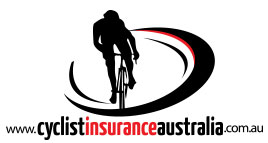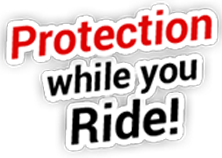I was riding with a friend on a dark, rainy evening a few weeks ago. It was my first time riding in Australia, and I was a bit nervous about my ability to remember to stay on the left side of the road since I ride on the right in the States and Europe. So rather than riding alongside my riding partner, I stayed glued to her wheel.
We needed to take the right lane to turn at a major intersection, and when my friend shouted “CAR!” and stayed put in her lane, I heard “CLEAR!” and nearly veered to my right in the path of the car behind me. Luckily, I realised my mistake immediately. Accident avoided. We stuck to hand signals for the rest of the ride.
Between road-related noise such as traffic, weather-related noise like wind and rain, and the various accents and colloquialisms amongst riding partners, it’s no surprise that verbal communication can get confusing on occasion. Whilst verbal signals can vary wildly between groups and nations, hand signals are fairly universal.
We’ve put together a few tips on how best to use both verbal and non-verbal communication whilst riding in a group. Keep in mind that if you’re riding with a new group, it’s a good idea to pay attention to their norms or ask about them pre-ride.
ROLLING! – We all know not to run red lights, right? But have you thought about how it’s equally dangerous to stop abruptly when the light suddenly turns yellow and you have a group of 40 barreling along at 40 km/hr behind you? If it’s a fresh yellow, you can and should roll it – and yell “ROLLING!” to those behind you to signal your attention.
CLEAR! – Use “CLEAR!” to indicate an intersection is safe to cross. Avoid yelling “GO!” as it can easily get heard as “NO!” and create confusion.
CAR BACK! – This phrase is passed up through the group when there is a vehicle behind everyone that is attempting to overtake the group.
 SLOWING! or STOPPING! – Use “STOPPING!” if you’re rolling up to some traffic lights and you intend to stop. This alerts the group to your attention. “SLOWING!” can be used in a similar fashion. Avoid yelling “CAR!” if a car is coming across an uncontrolled intersection. This sounds too much like “CLEAR!” to be useful.
SLOWING! or STOPPING! – Use “STOPPING!” if you’re rolling up to some traffic lights and you intend to stop. This alerts the group to your attention. “SLOWING!” can be used in a similar fashion. Avoid yelling “CAR!” if a car is coming across an uncontrolled intersection. This sounds too much like “CLEAR!” to be useful.
An open palm is another way to indicate slowing and is often done in combination with the verbal cue.

Keep out of the gutter – Signal to move away from the gutter by waving your hand behind your back in the direction you want the group to move.
CAR UP! – This is called out to the group when there is a vehicle parked on the side of the road. As it is meant to alert everyone to move over, some people will use the wave described just above along with a loud “CAR UP!” to the group.
RIDERS UP! – Use “RIDERS UP!” when you are in a fast moving group and are about to pass another rider or group of riders. This alerts your group to move over to the right (or left in North America and Europe). Remember to always pass on the right hand side in Australia and the UK and on the left hand side in North American and Europe.

Indicate a road hazard – Simply pointing to a pothole or other road hazard will be enough to signal to the other riders of what is up ahead. Do this well before the hazard is near and predictably move over so you don’t roll past too close to it.

Glass or loose gravel – Similar to the road hazard signal but with a slight variation. Point but wave with the finger doing the pointing. This signals that the hazard is scattered.

Pull through – A gentle flick of the elbow on the side of the riders that are moving forward indicates that you want the next rider to come through to pull a turn.

Puncture – Raise your hand, stop pedalling and hold a straight line until everyone has passed you. When the group is safely ahead, pull over to deal with your flat.
Please also check out our previous blog post titled "Tips for Staying Safe on the Road" for further cycling safety information.
Safe riding.



